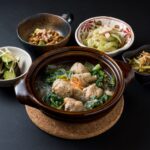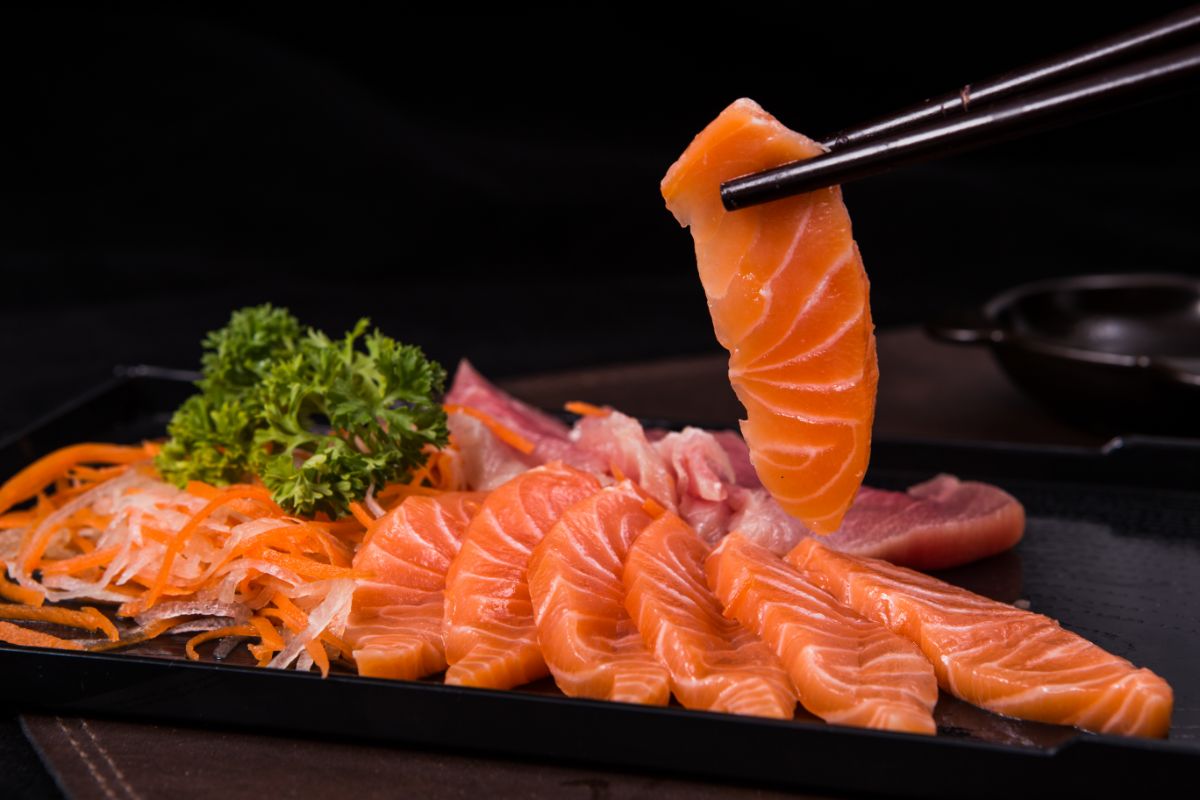The classic sushi you’re probably familiar with is usually made up of a handful of select ingredients: cooked rice, nori, and either fish, meat, or vegetables. However, not all sushi follows this same principle.
If you are not very familiar with sushi, it might surprise you to learn that not all sushi is made with rice! While this might seem like the most crucial component, there are sushi variations that use none at all.
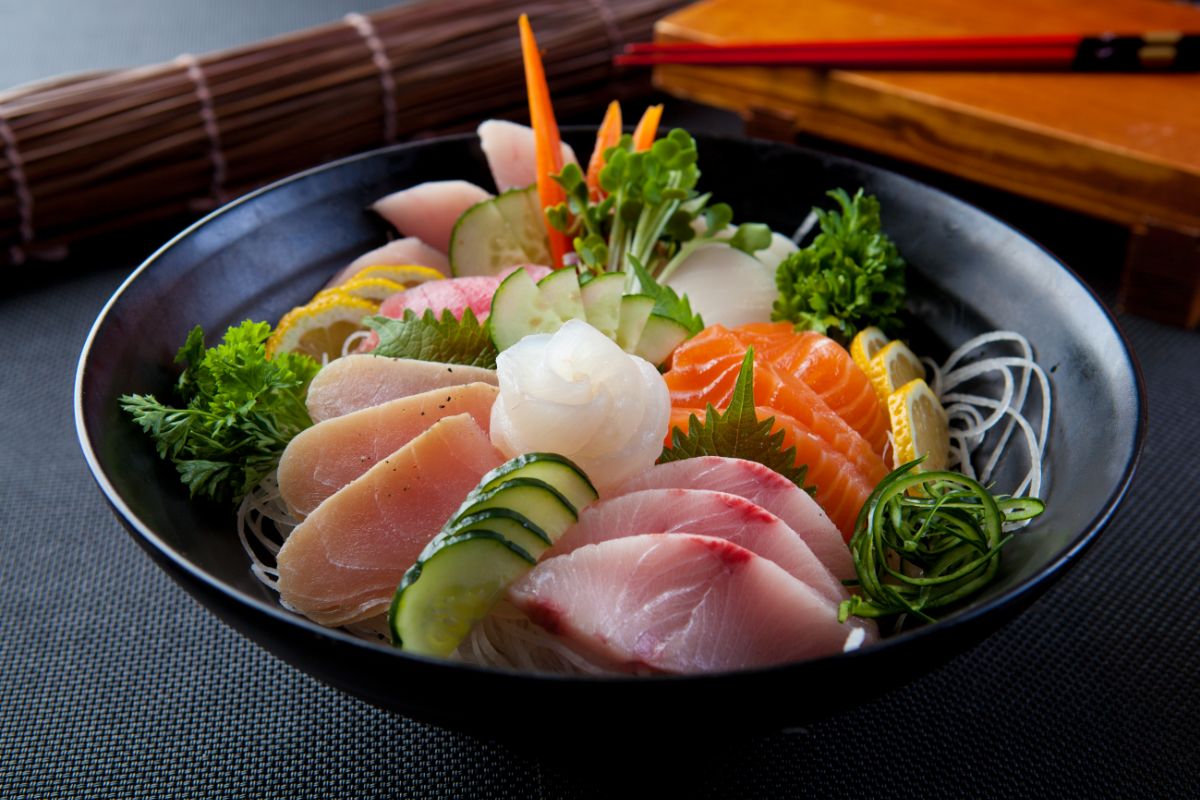
This is a fantastic option for people who have allergies or an intolerance to rice. However, how does this kind of sushi work, and what is it called? Keep reading to find out what you need to know about it!
Sashimi
There is some conjecture over whether sashimi should even be counted as sushi. That’s specifically down to the lack of rice yet the dish contains some of the very same components that you would expect from sushi.
That includes raw and thinly sliced meat or fish with seafood being very common as you might expect.
However, the sashimi could also be cooked in the form of unagi which is grilled freshwater eel though you could find sea urchin and other types of seafood.
If you are creating your own sashimi then make sure that you get your fish or seafood from a trusted supplier. The seafood should be served raw but should be served simply so as not to take much focus away.
Just a few slices of fish on top of some daikon radish and served with some dipping sauce like a side of soy sauce is ideal.
Sashimi is essentially meant to showcase the freshness of the fish so keep it straightforward and refrain from any further toppings.
Different types of sashimi include sake, which is raw salmon, ahi as raw tuna, and ebi as cooked shrimp.
If you are expecting to enjoy sashimi in the traditional forms then try it with raw salmon or raw tuna though cooked shrimp is popular too.
There is also hamachi which is raw yellowtail, uni as raw sea urchin, and tako which can be raw/poached octopus.
Sushi Rice Alternatives
If you are looking to replace cooked sushi rice and go for a low-carb option then cauliflower rice is a good option to consider.
For some, it is the only option to enjoy sushi if the individual suffers from a rice intolerance and it may be pleasing to learn that rice-free sushi is growing in popularity.
Others see cauliflower rice as a low-carb, ketogenic option that works well with fish and cucumber as a fresh-tasting component.
It is worth noting that though cauliflower rice is a worthwhile option, it does not come wholly without carbohydrates as unagi sauce can still contain 14g for every ounce.
Having sushi prepared with cauliflower rice is one of the ways in which keto sushi is prepared.
Similar alternatives to sushi rice can include wholewheat couscous and quinoa which are also not strictly Japanese but do work instead of cooked sushi rice.
While those grains may taste like rice and mimic their texture, they are not exactly low in carbohydrates. Instead of the white cooked sushi rice, you could simply change the type of rice you are using from black, to red, to brown rice.
Naruto
Another alternative to ordering sushi with rice is to request a batch of naruto or a naruto roll. Instead of wrapping seafood and vegetables in cooked rice, the sushi chef will wrap the sushi with a wrap of very thin cucumber slices.
You can also expect the naruto roll to include avocado to be extra filling. The cucumber can also create an ever more fresh-tasting sushi dish that should form a light meal.
The thinly sliced cucumber may mimic the role of the cooked rice that you would expect in sushi and it should still be delicious.
You can also get as creative with a naruto-style roll as with most sushi. Go traditional with some simple smoked salmon or go rogue with avocado.
How To Order Sushi Without Rice In Japan
Several sushi restaurants will expect you to enjoy their sushi in the traditional way. That should include cooked rice seasoned with vinegar and complemented with seafood, meat, and vegetables.
If you do want to order sushi without rice in Japan then be polite and make the restaurant aware beforehand. That may include naruto-style rolls, sashimi, or cauliflower rice instead of sushi rice.
You may even be able to peruse the menu before to look over their options for rice-free substitutes. As rice-free diets are becoming more popular, a lot of sushi chefs are beginning to be taught how to prepare their sushi without rice.
Call ahead as that’s the polite option and ask for rice-free sushi to be prepared. Try to schedule your visit for a less busy time as the restaurant should be treated with respect.
If the sushi restaurant cannot offer an alternative to rice such as naruto-style rolls, cauliflower rice, quinoa or wholewheat couscous, there is another way.
You should simply ask for the rice to be removed from the sushi. That pretty much makes the dish sashimi wrapped up in nori sheets.
In this scenario, you should likely order some nigiri and remove the rice or just go with the sashimi instead.
Japanese cuisine may seem traditional in a lot of ways yet it has found a way of updating sushi. Though sushi without rice may seem odd and something of a renegade decision, it is possible.
If anything, sushi that fails to contain any rice is either sashimi or a modern form of sushi.
Final Thoughts
Going without rice does not mean not enjoying sushi as there are several alternatives that you can enjoy. From simply prepared sashimi to sushi which is prepared with a different type of rice like black, red, or brown rice.
There are other grains to use for sushi like wholewheat couscous and quinoa. Though not strictly Japanese, these alternatives to rice can mimic the texture you would expect.
Frequently Asked Questions
Sushi proves to be highly popular simply because it is so versatile. That includes a range of flavor combinations that never seems to end. They look exceedingly pleasing to the eye, are conveniently packed, and prove to be a healthy meal.
Each piece of sushi should be expertly sized to be bite-sized yet that could be wrapped in nori or simply a piece of salmon perched on top of some cooked rice as nigiri sushi.giri sushi.
To create nigiri, the cooked rice should be pressed into a mold that is bite-sized. Maki sushi includes cooked rice which is rolled into a tube with a seafood or meat component and then cleanly sliced to create individual rolls.
Another difference is that maki sushi can contain several fillings contained on the inside. Nigiri simply has one piece of fish that is placed on top of some pressed cooked rice.
- 16 Best Websites To Watch Japanese Movies With English Subtitles - May 11, 2023
- Is ZIPAIR The Best Airline For Traveling To Japan? - May 11, 2023
- Ryu Murakami Vs Haruki Murakami – Which One Should You Read? - May 11, 2023


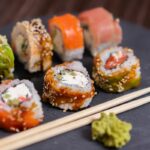

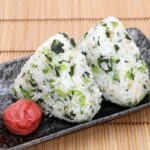
![How Many Types Of Sushi Are There? [Definitive Guide] How Many Types Of Sushi Are There? [Definitive Guide]](https://justaboutjapan.com/wp-content/uploads/2023/05/How-Many-Types-Of-Sushi-Are-There-Definitive-Guide-150x150.jpg)
